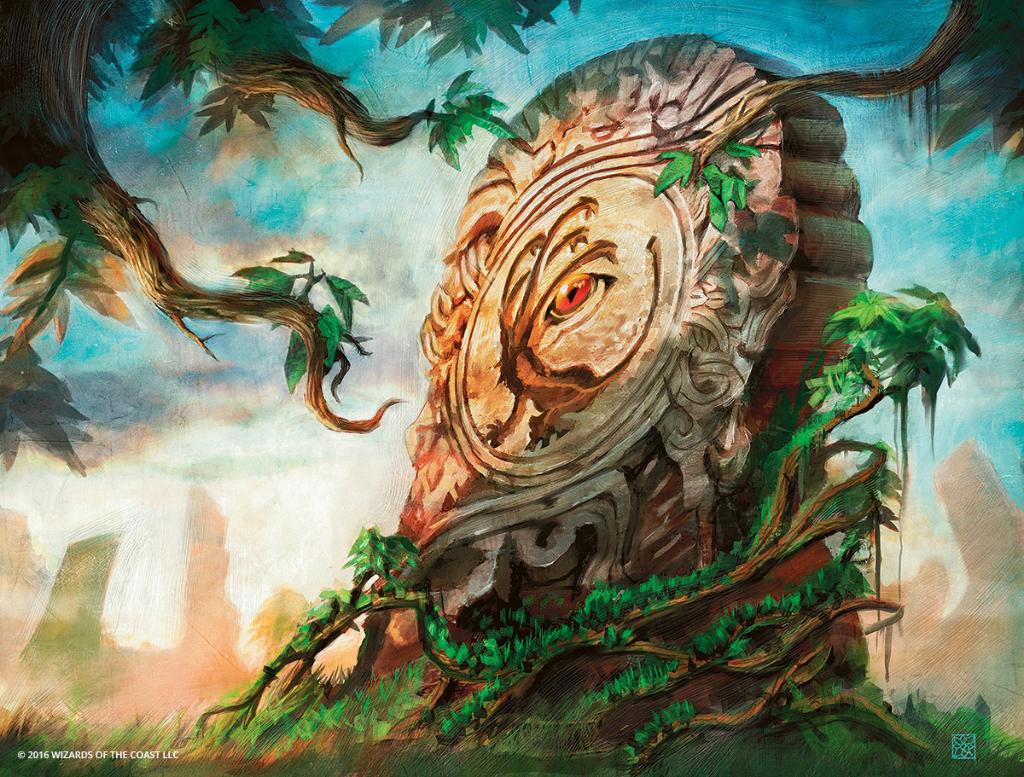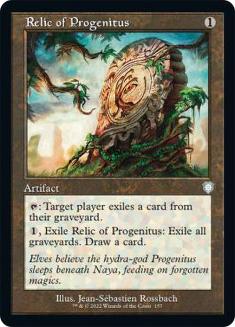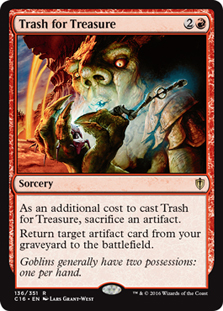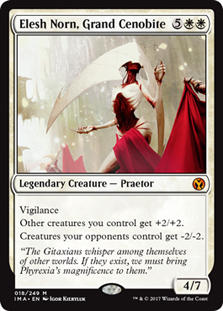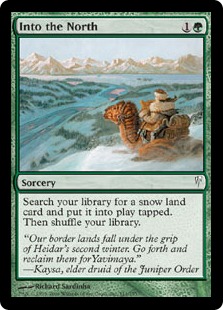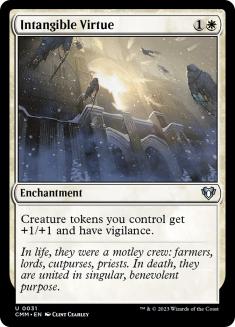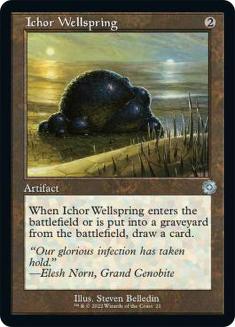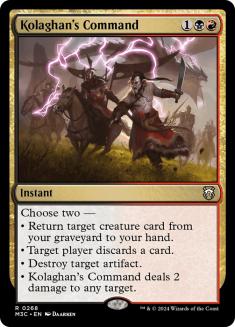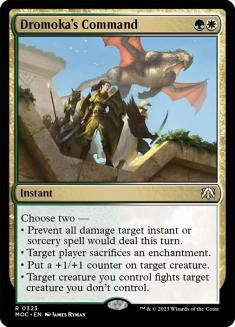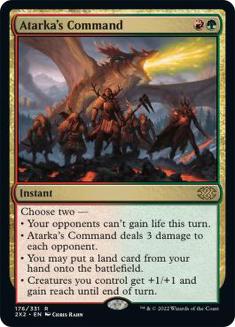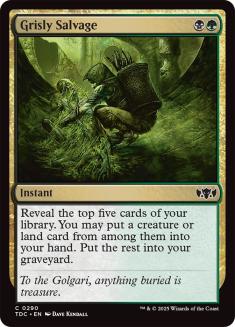More cards are being added to Historic, and unlike Historic Anthology 4, these cards are actually good. Today, I want to take a look at what I expect them to mean for Historic, which will see play, and how they’ll impact the metagame. With the banning of Thassa’s Oracle, we can’t exactly think of Historic Anthology 5 as simply being added to the Historic we just experienced over the last League Weekend. We must consider the other cards added to Historic alongside Tainted Pact that weren’t able to shine.
Without that combo in the format, we can consider Historic before the Mystical Archive. We should also consider other decks people explored with the Mystical Archive before settling on Tainted Pact.
Non-Commands
My guess is that the most impactful card on the Historic metagame from Historic Anthology 5 is Relic of Progenitus. This seems like the exact right hate card for Rakdos Arcanist, or Mizzix’s Mastery, or any future Unburial Rites / Trash for Treasure deck (likely fueled by Grisly Salvage), or most any successful Faithless Looting deck like Izzet Phoenix. Does Relic of Progenitus singlehandedly invalidate all of those archetypes? I don’t know, probably not, but it makes them a lot less appealing. That’s enough of the overall likely metagame that, at least in the short term, I think it’s entirely reasonable to sideboard four copies of Relic of Progenitus in any deck that isn’t extensively using its own graveyard, and maybe some of those.
Graveyard hate, especially sideboard graveyard hate, doesn’t invalidate the concept of using your graveyard. It puts a cap on how reliant you want to be on your graveyard. For example, Relic of Progenitus doesn’t make Kolaghan’s Command bad. Kolaghan’s Command can just do other things and doesn’t require a lot of setup to use the graveyard. But cards like Unburial Rites, Mizzix’s Mastery, or Trash for Treasure that require setup for a big finish and depend on a graveyard really struggle with hate that strong if it sees a lot of play, which Relic should.
Given that Relic joins them, I’m not optimistic about Trash for Treasure, Grisly Salvage, or the Praetors as reanimation targets becoming major players in Historic. If there’s a Trash for Treasure deck, I think it wants to try to use Bolas’s Citadel rather than God-Pharaoh’s Gift because Citadel doesn’t ask anything else in your deck to care about the graveyard, so you can likely have a solid backup plan against graveyard hate that’s just “cast Bolas’s Citadel.” Maybe you even sideboard out Trash for Treasure sometimes.
The same is true of Reanimator. The only way I can really imagine it being successful is if it’s an Abzan deck with a bunch of mana creatures that can hard-cast or reanimate Elesh Norn, Grand Cenobite, like the Unburial Rites Abzan decks we saw in Standard. Elesh Norn is a really messed-up card, because seven just isn’t as much mana as it feels like it should be, and Elesh Norn just beats so many things by itself.
Honestly, the more I think about it, the more I think Elesh Norn is likely to inspire midrange ramp decks rather than Reanimator decks. I don’t really think you get to Elesh Norn faster by trying to set up Unburial Rites than just by casting Into the North and Cultivate, and those cards set you up to do other things with your mana, whereas filling your graveyard sets you up to lose to graveyard hate.
Speaking of, Into the North is an incredible card, and will likely be the most ubiquitous maindeck card from Historic Anthology 5. The year that I won a car at Worlds, I qualified for that tournament playing a different Standard deck, a Gruul Midrange deck that used Into the North and Harmonize, which are great together as the basis for a midrange green deck without blue, and which are now legal together again.
Creatures (8)
Planeswalkers (4)
Lands (26)
Spells (22)

Operating entirely at sorcery speed, this deck is fairly blunt and will have bad matchups against Dimir Rogues-style decks that prey on expensive sorceries, but the ramp and card advantage in this deck are really strong, and between Wrath of God, Yasharn, Relic of Progenitus, and Declaration in Stone, you have access to a lot of great haymakers against certain strategies. Getting the exact right big spells for an expected metagame is an important project that this build likely hasn’t solved, but there’s some potential here.
More likely, Into the North will just make Sultai Ramp a better choice in Historic.
Intangible Virtue is a big question mark for me. Wizards of the Coast (WotC) has generally gotten a lot more generous with printing cards that make tokens since this card was banned in Innistrad Block Constructed, but we don’t have a lot of strong flying tokens makers like Lingering Souls and Spectral Procession, which are the cards that have previously been successful with Intangible Virtue. It’s hard for me to imagine a deck that’s basically just a bunch of threats and not necessarily especially fast being competitive, but if Selesnya Angels can put up a decent fight, I don’t know why Selesnya Tokens couldn’t.
Creatures (4)
Lands (22)
Spells (34)

Battle for Bretagard might be a little win-more, but it’s kind of exciting in this deck, since every card makes a different kind of token. Intangible Virtue plays extremely well with convoke, making Conclave Tribunal and Venerated Loxodon great fits here.
Angelic Ascension is a little weird, but with Battle for Bretagard and Esika’s Chariot to copy it, making an Angel token is really appealing, and it’s not like you have any shortage of 1/1s to exile.
Depending on the metagame, this deck might want a bunch of copies of Yasharn, Implaccable Earth in the sideboard.
I would love to play with Ichor Wellspring since it’s exactly my kind of nonsense. It’s a tall order, but with Saheeli, Sublime Artificer and Sai, Master Thopterist, maybe there’s a chance. I think Galazeth Prismari likely isn’t a strong enough Urza, particularly due to the limitation on how mana can be spent and inability to use summoning-sick artifact creatures for mana, but there’s some chance it’s the missing piece needed for a Paradoxical Outcome deck.
Commands
The Command cycle is probably the face of Historic Anthology 5, even though I think Into the North and Relic of Progenitus are the most significant cards. The Commands were absolutely huge players in Standard, and Kolaghan’s Command has held up in Modern, with fringe play from Atarka’s Command. They’ve had more life in Pioneer. In Historic, I don’t expect Kolaghan’s Command to be quite as good as it is in Modern, since Snapcaster Mage and most the other most frequently returned creatures aren’t available, and there are fewer absolutely must-answer artifacts, but it may rival or even surpass Into the North as the most-played card from this collection.
I expect that Kolaghan’s Command will pair best with Lurrus of the Dream-Den, though there’s some hope for it with Torrential Gearhulk and Magma Opus. I imagine every set will lead to the question, “Does this make Death’s Shadow good enough for Historic?” Kolaghan’s Command doesn’t seem to be the missing piece there.
Dromoka’s Command was absolutely devastating for decks that played a few important enchantments, but it’s not that exciting against Auras or Sagas, which are most of the enchantments that see play in Historic. If anyone shows up with Intangible Virtue or Tempered Steel, it’ll ruin their day pretty badly, but for the most part, this is basically just a cheaper/better Inscription of Abundance. It’s the best removal spell available for Selesnya creature decks, and presumably awesome in any Conclave Mentor shell. I don’t expect it to lead to a competitive Mavinda, Students’ Advocate deck, but it’s not entirely impossible.
Gruul has been a successful Historic deck that even got Burning-Tree Emissary suspended for a while, and Atarka’s Command is perfect for Burning-Tree Emissary decks. The problem is that I think Atarka’s Command is filling the same role as Embercleave. Both try to end the game when you have several creatures attacking.
Is Atarka’s Command better than Embercleave? If your creatures are generally smaller, more plentiful, or you’re playing more burn, probably, but if you’re playing Gruul Spellbreaker and Questing Beast, probably not. Most recently, I think the Gruul decks have been built to maximize Embercleave, and I don’t think Atarka’s Command would help much there. It might inspire a lower-curve Gruul deck, but I see that as closer to inspiring a different archetype than adding strength to the existing build. Adding a competing rather than complementary tool adds less strength than it can appear to an existing deck, so I think Atarka’s Command will slightly disappoint.
The Rest
Todd was optimistic about Grisly Salvage in his review, but I’m not a believer. I don’t think we have the tools that made this a player in Historic and I think the hate is just too strong. I also think the power level of Historic is such that it’s just hard to use a two-mana setup spell like this. I’m not saying it won’t see play, but he gave it an A+, indicating a home run, and I think it’ll be fringe at best.
Like adding Grisly Salvage and Relic of Progenitus, this Anthology brings Ancient Grudge to make sure no one gets too excited about Vault Skirge. The current composition of Historic isn’t such that I’d be inclined to play a lot of Ancient Grudges, but it’s a “best in class” card from among every card ever printed, so if any artifact decks are successful, it’s an impactful tool to have access to.
Overall, Historic Anthology 5 adds the most power in the form of narrow answers — important sideboard tools in case any particular strategy gets too strong. Beyond that, it opens the door for a few different graveyard decks, slightly upgrades ramp decks, supports a few aggressive strategies that haven’t been top contenders, adds Elesh Norn as a different kind/color of ramp payoff than we’ve been using, and adds the Command cycle. The Command cycle generally encourages interactive Magic, which is a welcome change after a weekend dominated by combo.

